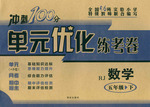题目内容
EDGEWOOD - Every morning at Dixie Heights High School, customers pour into a special experiment: the district’s first coffee shop run mostly by students with special learning needs.
Well before classes start, students and teachers order Lattes, Cappuccinos and Hot Chocolates. Then, during the first period, teachers call in orders on their room phones, and students make deliveries.
By closing time at 9.20 a.m., the shop usually sells 90 drinks.
"Whoever made the chi tea, Ms. Schatzman says it was good," Christy McKinley, a second year student, announced recently, after hanging up with the teacher.
The shop is called the Dixie PIT, which stands for Power in Transition. Although some of the students are not disabled, many are, and the PIT helps them prepare for life after high school.
They learn not only how to run a coffee shop but also how to deal with their affairs. They keep a timecard and receive paychecks, which they keep in check registers.
Special-education teachers Kim Chevalier and Sue Casey introduced the Dixie PIT from a similar program at Kennesaw Mountain High School in Georgia.
Not that it was easy. Chevalier's first problem to overcome was product-related. Should schools be selling coffee? What about sugar content?
Kenton County Food Service Director Ginger Gray helped. She made sure all the drinks, which use non-fat milk, fell within nutrition (营养) guidelines.
The whole school has joined in to help.
Teachers agreed to give up their lounge (休息室) in the mornings. Art students painted the name of the shop on the wall. Business students designed the paychecks. The basketball team helped pay for cups.
1.What is the text mainly about?
A.A best-selling coffee.
B.A special educational program.
C.Government support for schools.
D.A new type of teacher-student relationship.
2.The Dixie PIT program was introduced in order to__________.
A.raise money for school affairs
B.do some research on nutrition
C.develop students' practical skills
D.supply teachers with drinks
3.We know from the text that Ginger Gray__________.
A.manages the Dixie P1T program in Kenton County
B.sees that the drinks meet health standards
C.teaches at Dixie Heights High School
D.owns the school’s coffee shop
【小题1】B
【小题2】C
【小题3】B
解析:
【语篇解读】本篇文章讲的是在Dixie Heights High School,里面开了一家咖啡店是由那些有特殊学习需要的学生来经营的一个实验试点。
【小题1】主旨大意题。本篇文章讲的是在Dixie Heights High School,里面开了一家咖啡店是由那些有特殊学习需要的学生来经营的一个实验试点。根据文章所讲的,最佳答案应该是B项。
【小题2】推理判断题。根据文章的第五段和第六段Although some of the students are not disabled, many are, and the PIT helps them prepare for life after high school.和 They learn not only how to run a coffee shop but also how to deal with their affairs. They keep a timecard and receive paychecks, which they keep in check registers.我们可以知道这家咖啡店的开展主要是为了培养学生的实践能力。
【小题3】细节判断题。根据after hanging up with the teacher.,hang up 是挂断电话的意思, 故选的是C项。
【小题4】 推理判断题。根据文章Kenton County Food Service Director Ginger Gray helped. She made sure all the drinks, which use non-fat milk, fell within nutrition guidelines.应选的是B项。

 冲刺100分单元优化练考卷系列答案
冲刺100分单元优化练考卷系列答案